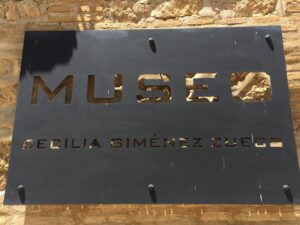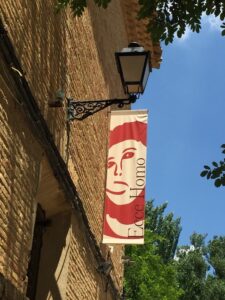
First restoration attempt
Earlier this summer, familiar news came from Spain. Yet another amateur restorer tried his hand at conservation work, with predictably disastrous results. In this case, however, the painting was disfigured not only once – but twice. A private collector in Valencia entrusted a copy of The Immaculate Conception of Los Venerables by Bartolomé Esteban Murillo to a furniture restorer for cleaning. 1,200 euros later, this was the result:

Second restoration attempt
Naturally, the collector was stunned – this led the restorer to attempt to fix the problem, which only made the situation worse:
The collector finally sought a professional art restorer to correct the damage, with both his finances and the painting worse for wear.
Despite patrimony laws protecting cultural property at both the local and national levels, art restoration is an unregulated field in Spain. María Borja, the coordinator of Valencia’s branch of the Professional Association of Conservators Restorers of Spain (Asociación Profesional de Conservadores Restauradores de España, ACRE), indicates that as a result, botched restorations are common and may cause “irreversible damage” to artworks. This legislative blind spot has made Spanish heritage vulnerable to third party intervention.

“Beastly” museum
© Leila Amineddoleh

Museum in Borja © Leila Amineddoleh
The Immaculate Conception is the latest in a series of Spanish “restoration fails” that rose to prominence in 2012 with the so-called “Beast Jesus.” Cecilia Giménez, an elderly widow and “amateur painter,” attempted to restore a fresco of Jesus crowned with thorns (Ecce Homo) located at her local church in Borja, Zaragoza. Her efforts fell far short of the mark and went viral, spawning thousands of memes and parodies over media outlets. It even served as the focus of tourism, drawing 150,000 tourists from all over the world to see the “terrible work of art” in person. There is now even a museum devoted to “Beast Jesus” in Borja. Nonetheless, the fresco will remain beastly since restorers are unable to undo Ms. Giménez’s work.

Site of the St. George “restoration”
© Leila Amineddoleh
More recently, in 2018 the church of San Miguel de Estella in Navarre hired an art teacher to restore a sculpture of Saint George. The result was “something out of a Disney cartoon” with “a pink face, beady eyes, and a garish red and gray suit of armor.” In the words of the municipal mayor, “the restoration leaves much to be desired.” Qualified restorers then worked for over 300 hours to remove the new material from the sculpture and restore it to its original dignity. Both the church and amateur restorer were fined 6,000 euros and the restoration cost nearly 36,000 euros in total. Although the end result is much more pleasing to the eye, some of the original polychrome was lost due to the use of improper paint during the prior intervention.
That same year, another “sacrilegious restoration” took place in the village of Rañadorio, Asturias. A local tobacco shop owner, María Luisa Menéndez, gave a 15th-century trio of wooden sculptures a “neon makeover,” including eyeliner and lipstick. Ms. Menéndez defended her colorful interpretation as a necessity but the regional minister for culture termed it “more a vengeance than a restoration” since the sculptures had been restored 15 years earlier and were never painted in the first place. Many on Twitter, including ACRE, started using the hashtag #SOSPatrimonio (#SOSPatrimony) to call attention to this ongoing trend and demand governmental intervention before more misguided amateurs decide to provide assistance.
These cases show that collectors must be wary of entrusting their valuable property to inexperienced workers in order to save money. Not only will this be costlier in the long run, but the damage to an artwork may be permanent, resulting in a loss of resale and aesthetic value. It is doubtful that a serious collector would want to purchase “Beast Jesus” and install it in their home, except for the sake of novelty. However, novelty does not last forever. The historical importance of heritage is also a consideration – amateur restorations can strip artworks and objects of their historical context and important details may be lost forever. This is a blow both to private collectors and the public at large. At Amineddoleh & Associates, we strive to assist collectors in making the best decisions for their collections and safeguard artworks for future generations.
The phenomenon of abandoned towns and Spain’s financial crisis have heightened the need for more robust ethical and professional standards in the field of heritage restoration and protection. Bungled restorations are just the tip of the iceberg; aggressive cleaning of historical building façades, using protected sites as parking spaces, and theft from local churches all threaten cultural objects in Spain.